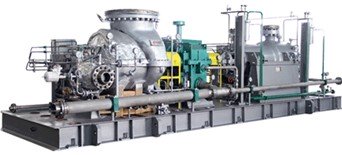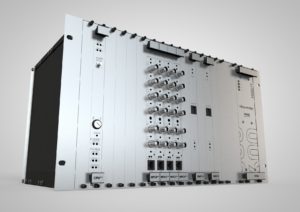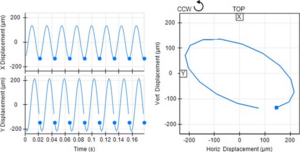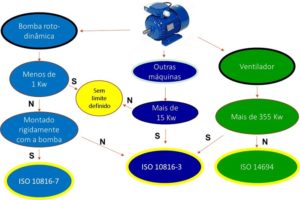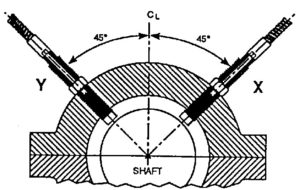Introduction to vibration analysis in turbomachinery
This article provides an introduction to the analysis of vibrations in turbomachinery.
This article belongs to a series, which constitutes the support material for the course on vibration analysis in turbomachinery. Links to the other articles can be found on here.
Introduction to vibration analysis in turbomachinery –how turbomachinery is special in economic terms?
Turbomachines are rotating machines, with greater power, found in the industry. The largest ones work in power generation plants, but there are many others functioning as triggers, especially in the petrochemical industry.
Below is an image of the largest steam turbine existing, installed in a nuclear power plant in the United Kingdom, with the power of 1900 MW. To protect this machine from excessive vibrations and collect diagnostic information, a permanent protective and predictive system was installed VM600 from Vibrometer.
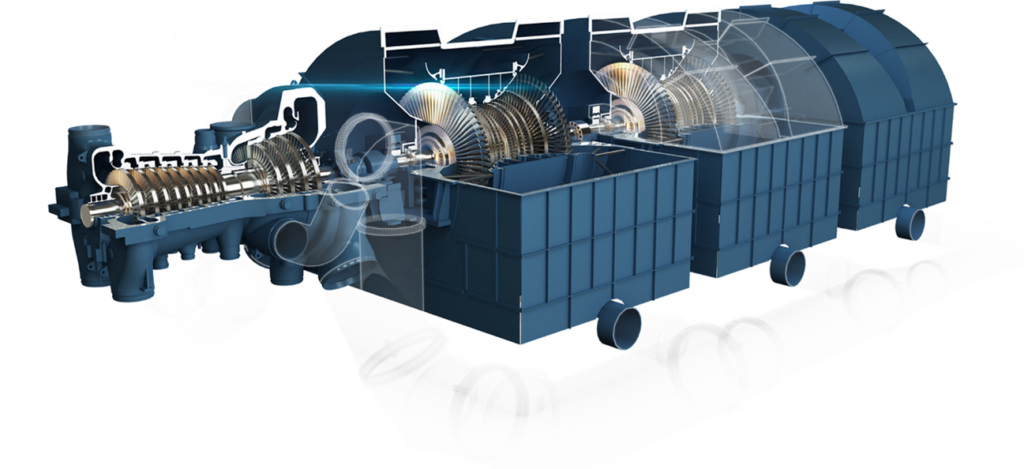
In Portugal there is nothing like it, but even so there are some large turbomachines. In the following table you can see the TOP10 of the largest turbomachinery, by power, in Portugal.
TOP10 of the biggest turbomachinery, by power, in Portugal
| Place not TOP10 | Dam | No. of groups | Power of each group (MW) |
| 1 | Gas generators at the Pego Power Station | 2 | 418 |
| 2 | Gas generators at the Carregado Power Station | 3 | 392 |
| 3 | generator sets (reversible) dam of Venda Nova III | 2 | 373 |
| 4 | Gas generators at Tapada do Outeiro Power Station | 3 | 330 |
| 5 | Francis hydro generators at the Alto-Lindoso dam | 2 | 315 |
| 6 | Hydro generator sets at the Alqueva dam | 2 | 260 |
| 7 | Hydro generator sets at the Picote II dam | 1 | 246 |
| 8 | Hydro generator sets at the Fridão dam | 1 | 241 |
| 9 | Central de Lares gas generator sets | 2 | 221 |
| 10 | Hydro generator sets at the Gouvães dam | 4 | 220 |
These machines have very high downtime and maintenance costs compared to most other rotating machines..
Thus, they justify a greater investment in protection and condition control techniques., that contribute to its availability and reliability.
What is specific to turbomachinery in terms of vibrations?
Although the vibrations measured with the turbomachinery in steady state, provide a lot of information relevant to the knowledge of their operating condition, this is often not enough.
First of all, some of the failure modes of this type of machines evolve in a few seconds. In consequence, so as to be protected from excessive vibrations, must be permanently monitored. Periodic vibration monitoring, with a portable device, does not protect machines from fast-moving breakdowns.
For this type of machines, with oil film bearings, The most used sensors are those of proximity, installed in pairs, in each bearing.
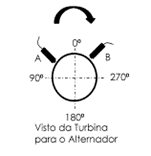
It is in a transitory regime that it is possible to obtain more complete information, particularly during starts and stops.
With sensors and a protective monitoring system already in place, the task of collecting data in a transitory regime is simplified.
Collecting information from diagnostic vibrations, in transitory regime, is thus justified by the optimization of decision-making on these assets and the return on this investment.
The collection of diagnostic vibration information can be carried out by the permanent system or, Alternatively, with a portable multichannel analyzer.
Introduction to vibration analysis in turbomachinery – The need for a multichannel vibration analyzer
Due to the size of these machines and their design with oil film bearings, are normally permanently instrumented with displacement sensors and vibration monitors. This is to protect them from damage caused by excessive vibrations.. This kind of sensors, allows the implementation of specific vibration monitoring techniques. To make the most of this information, it is necessary that all measurements are carried out in parallel, simultaneously. That is, for this information to be made available, measurements cannot be carried out in sequence with a vibration data collector/analyzer.
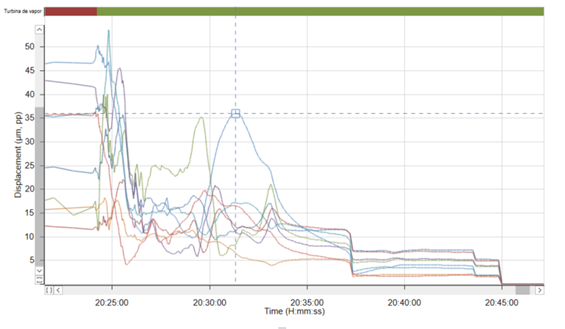
For example, for a turbine-alternator group, with four bearings it is common to have eight displacement sensors (two per bearing) and a permanently mounted tachometer. In order to carry out the measurements in this group of sensors, it is necessary to have a multichannel analyzer with 9 input channels.

so it is common, to this end, Analyzers with a minimum of 20 channels such as the Vibrometer brand analyzer used by DMC, that you see in the figure.

With its powerful multi-channel analyzer, da brand Vibrometer, DMC provides the turbomachinery testing service, namely at start-up and stops.

